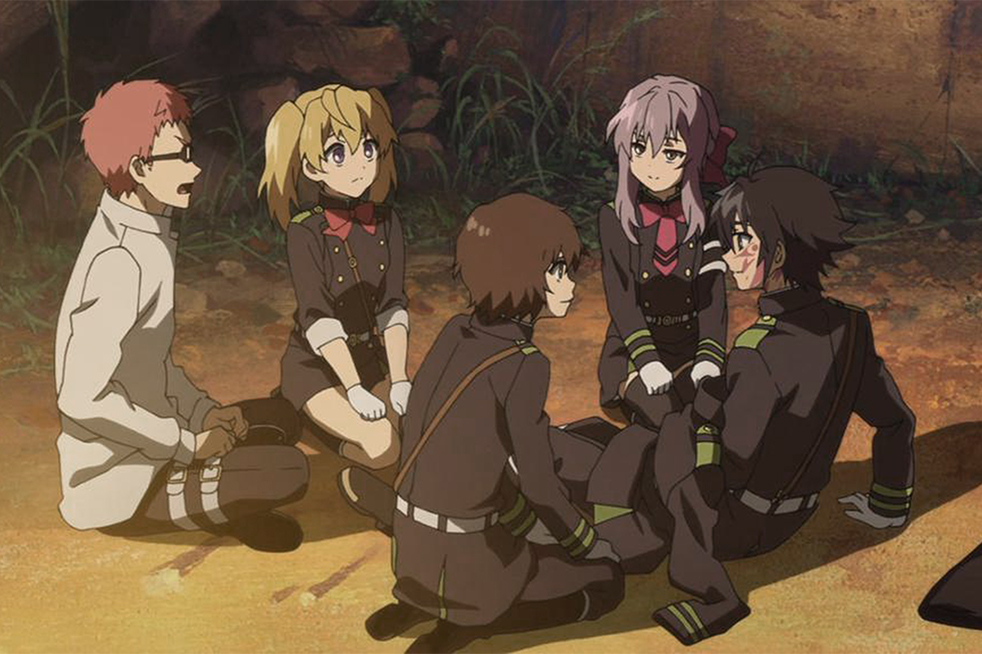With the fall television season beginning in the US, it should come as no surprise that other countries are also marking their calendars for the openings of exciting new shows. While American television tends to have about 22 episodes per season, shows in Japan usually have twelve or thirteen episodes. These shorter seasons are called kūru, which can be translated as “courses,” and tend to be less generic and more focused than their counterparts from America.
In Japan, kūru always begin every third month (January, April, July and October), meaning that if a series is scheduled for two consecutive seasons, there is either a one week break or none at all between the two seasons, which is why popular anime such as “Fairy Tail” or “Meitantei Conan” seem to run non-stop.
While there are original anime such as “Darker than Black” and “Tengen Toppa Gurren Lagann,” it is worth noting that most anime are generally created as a spin-off or marketing strategy for popular light novels or manga.
One such anime is “Owari no Serafu” (translated as “Seraph of the End”), which first premiered in April earlier this year. The first season, “Seraph of the End: Vampire Reign,” introduced Yūichirō Hyakuya (Miyu Irino, “Spirited Away”) and Mikaela Hyakuya (Kenshô Ono, “Boruto: Naruto the Movie”), two orphans who essentially become family in a world ravaged by disease, vampire invasion and monsters called the Horsemen of John — a true dystopian story.
In the first few episodes of the anime, the two lose everyone they have ever known, including each other. Mikaela becomes a vampire in denial, refusing to drink human blood and generally not caring whether he lives or dies. Yūichirō, on the other hand, escapes the vampires and vows revenge, joining the Japanese Imperial Demon Army in order to kill every vampire who endures the misfortune of meeting him.
The two are diametrically opposite: Yūichirō will save whomever he sees as family, no matter the cost, while Mikaela is happy to wait until the opportune moment to do so, minimizing the risk of failure or injury.
The second season, “Battle in Nagoya,” started in Japan on Oct. 10. FUNimation! and Hulu made the episodes available to American viewers with English subtitles shortly thereafter.
The first two episodes of “Seraph of the End: Battle in Nagoya” show Yūichirō and the rest of his squad recovering from their latest battle, in which Yūichirō learned that Mikaela was still alive and subsequently lost control of his powers, mumbling about “Sinners” while trying to murder everyone. Once the group had recovered sufficiently, they went on to learn more about their demon-possessed weapons. These episodes are not particularly interesting since the plot is slow; instead, the audience is treated to more world-building.
This is, however, merely the beginning of “Battle in Nagoya”, so these first, less intense episodes are more than likely building towards the coming fight and are indisputably giving important backstory. The future storyline of this anime, if anything like the manga it is based on, will surely be interesting as both Mikaela and Yūichirō will attempt to save the other.
Unfortunately for the show, its musical score is lackluster at best, making the opening and ending cinematics entirely skippable and the rest of the episode reliant on the plot and characters alone. While this might seem like a benefit, forcing the writers to actually care what is being placed in their show, even more interesting storylines can be greatly improved with stellar music, as exemplified by the popular anime “Darker than Black” or “Attack on Titan.”
As the music of “Seraph of the End” currently is, it does not fit with the on screen action, often feeling dreamy while the characters are actually fighting for their lives. Despite the incongruous music, “Seraph of the End”’s plot is unpredictable, leaving viewers eager for more.
